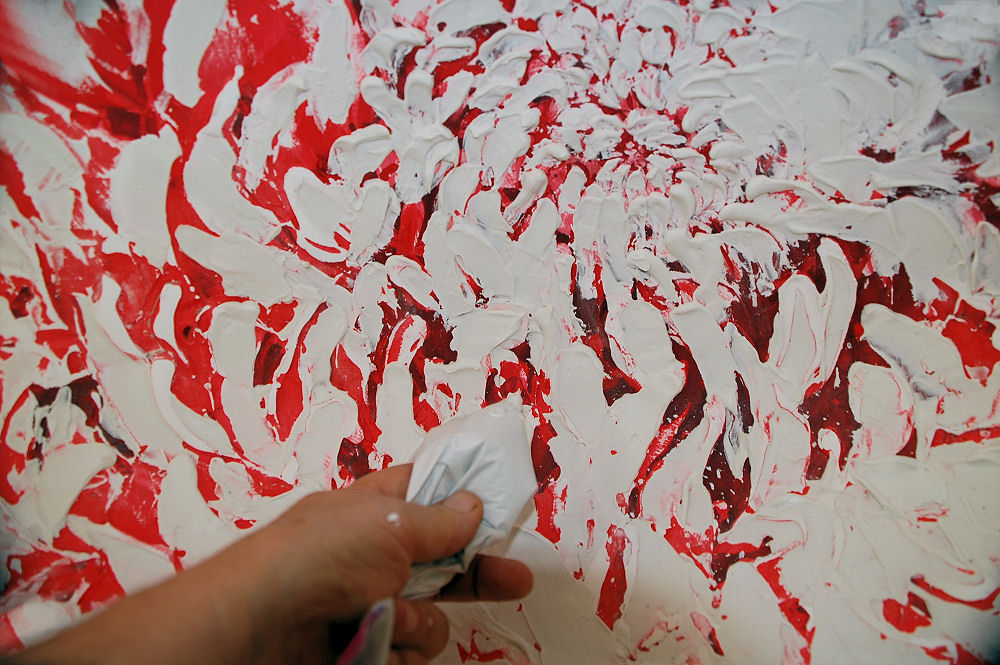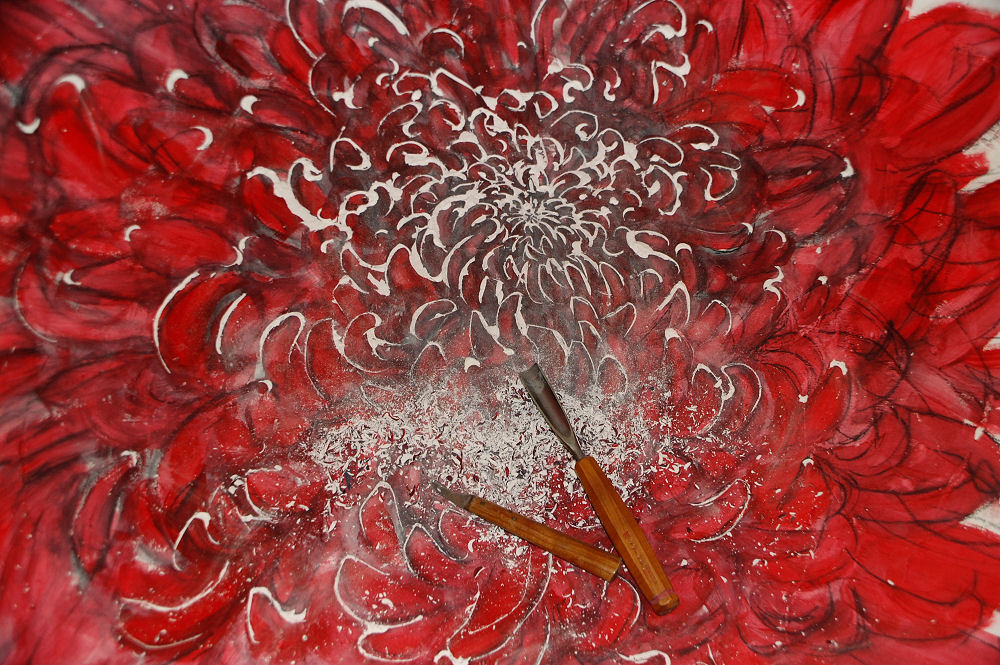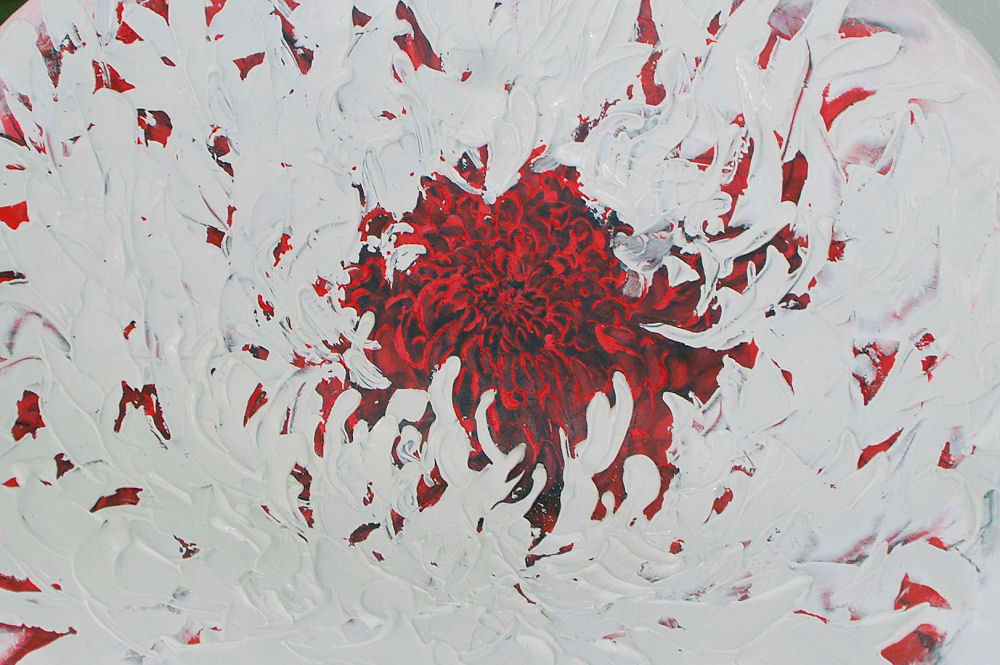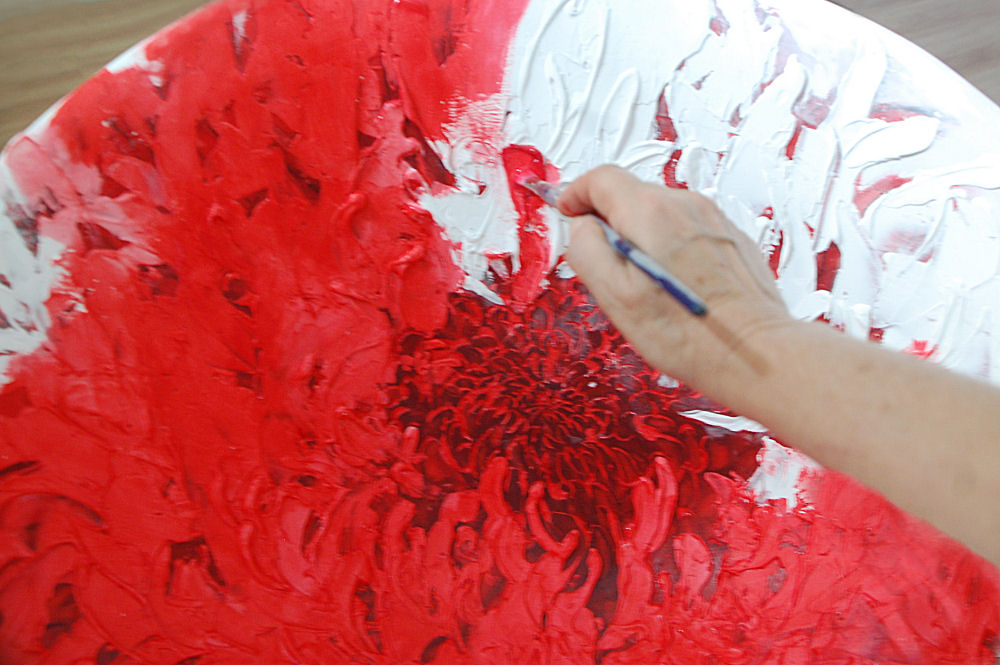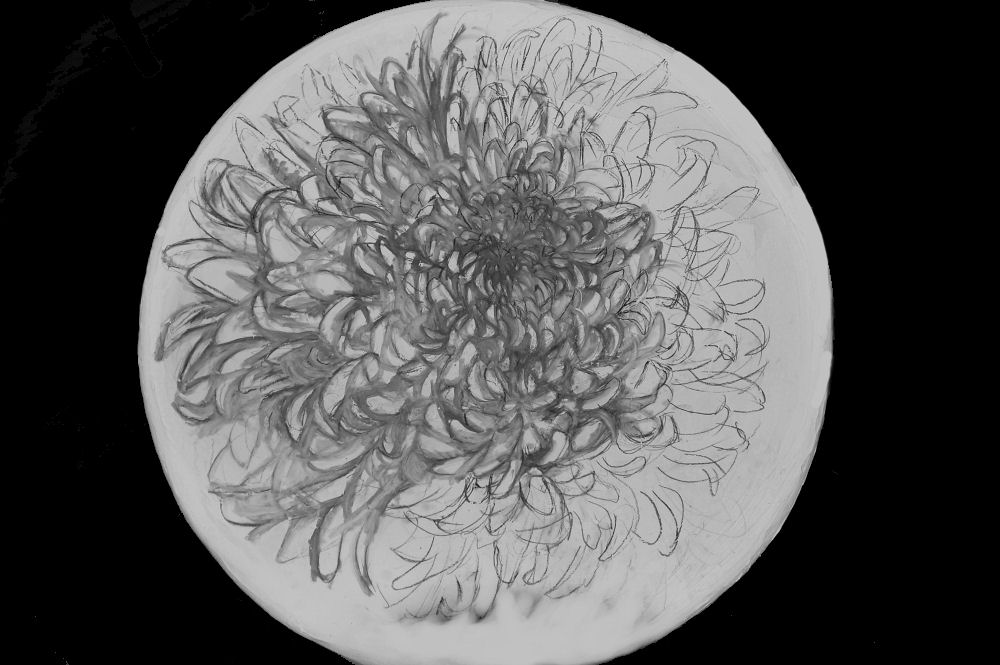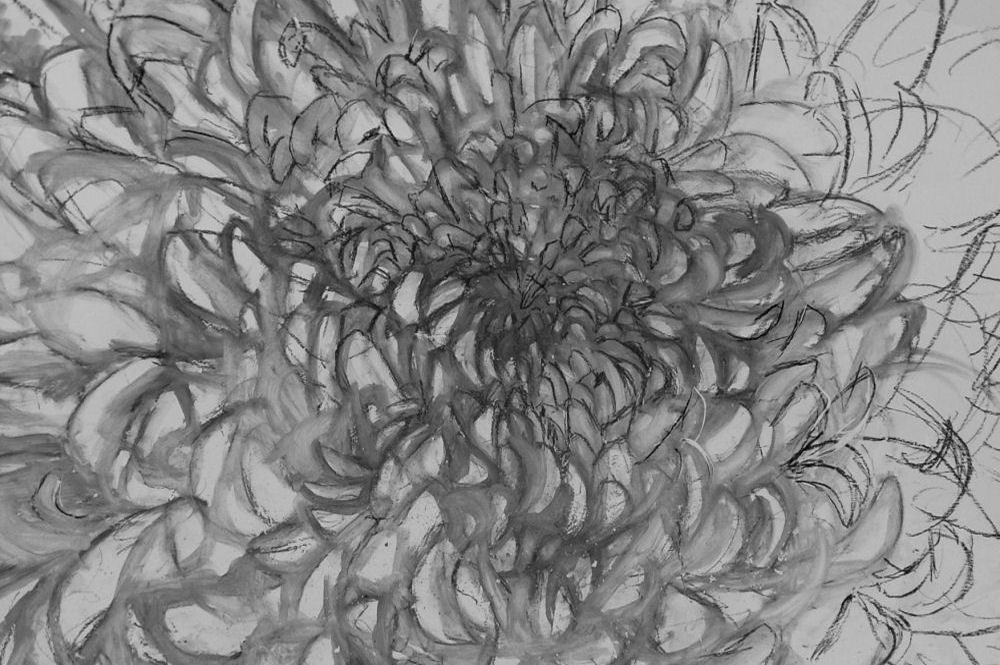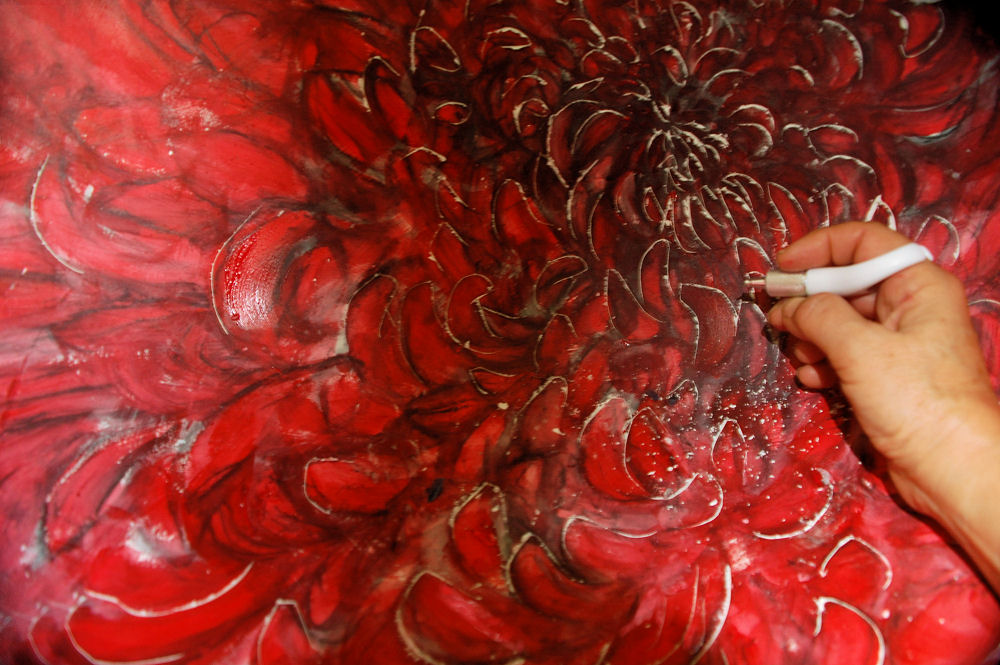Archive for September, 2015
Chrysanthemums Chair, work in progress
Tuesday, September 29th, 2015
Using knives and chisels, areas are carved away. The flower design is continually rebuilt by applying modeling paste and plaster, sanding, painting, and carving. Material is easier to control by squeezing out of baggies, like icing in a pastry bag.
Chrysanthemums Chair
Thursday, September 10th, 2015
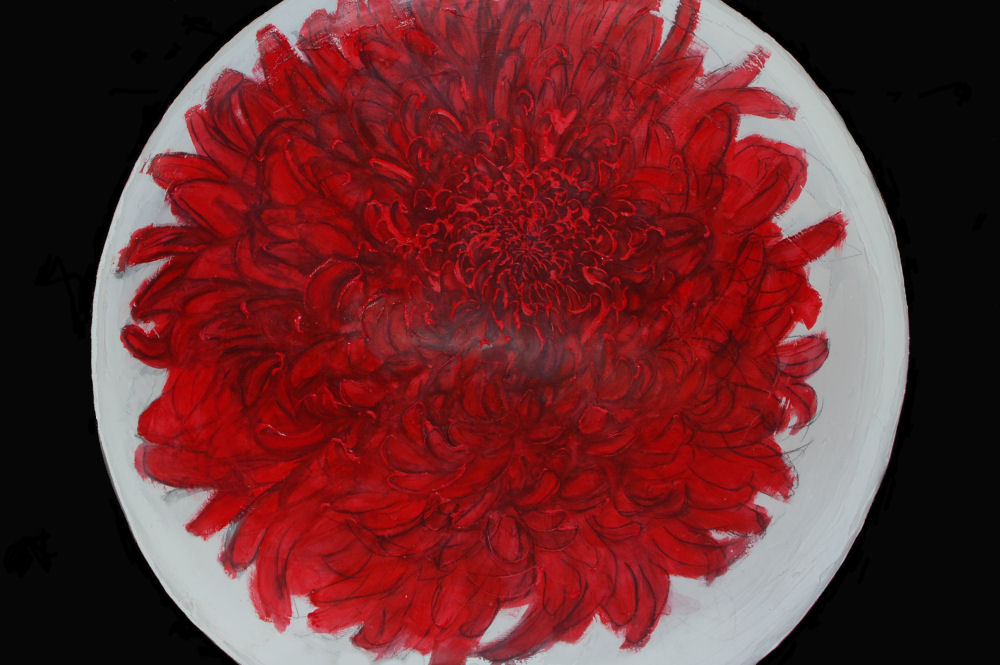
Chrysanthemums Chair Work in progress. 29L x 29W x 29D inches refurbished chair, canvas, plaster, acrylics. Thumbnails: graphite sketch, acrylics, carving detail. Above: first application of paint over carved surface. Next, plaster will be applied to petal areas to raise the surface. When dry, the whole process will be repeated; sanded, carved and painted again. I like the white background, so may not add much green or any other color except as contrast and in shadows. This chair will coordinate with the large Chrysanthemums painting.
Symbolism and Significance of Chrysanthemums
With a history that dates back to 15th century B.C., first cultivated in China, where it is symbolic of honesty. In Egypt, Tutankhamen was reportedly buried with chrysanthemums. The plant is thought to have been introduced in Japan by Buddhist monks around the fifth century. Initially forbidden to grow except by nobility, the chrysanthemum is now a showy garden perennial common in gardens the world over, in a vast array of cultivars, shapes and sizes, with colors ranging in shades of purple, pink, red, white, yellows and greens.
In terms of design, the mandala formation demonstrates unfurling petals spiraling outward in succession from the center, like fireworks. It is easy to see why chrysanthemums symbolize optimism and joy.
A few states and sororities in the U.S. claim it as their official flower. Many European countries and parts of North America use white chrysanthemums in funeral arrangements, as they are associated with grief and mourning, whereas in Japan holds a “Festival of Happiness” to celebrate this flower each year, attributing it to the sun and happiness. There, it is a symbol of the Emperor and the Japanese Imperial Family. In Canada and the United States, the floral industry thrives on the notion that every flower has unique characteristics, and we communicate our sentiments through specific bouquets according to occasion. For example, the chrysanthemum is the November birth flower and also appointed to the 13th wedding anniversary.
Certain species of the plants are edible and contain medicinal properties. Leaves and roots can be cooked, used mainly in Asian dishes, and flower petals are boiled to make tea. Extracts of the plant, pyrethrins, are processed and preferred as an earth-friendly, biodegradable commercial insecticide.
In cold northern climates they are planted as annuals, whereas here in the Pacific NW coast they are winter- hardy, blooming each Fall. If the plants get leggy before blooms appear, they benefit from being cut back and are easily propagated. Colorful new “mums” add liveliness to flower gardens as seasons change, and they are some of the first to entice us at stores during Spring. Chrysanthemums are perfect in home bouquets, lasting longer than any other cut flower.


